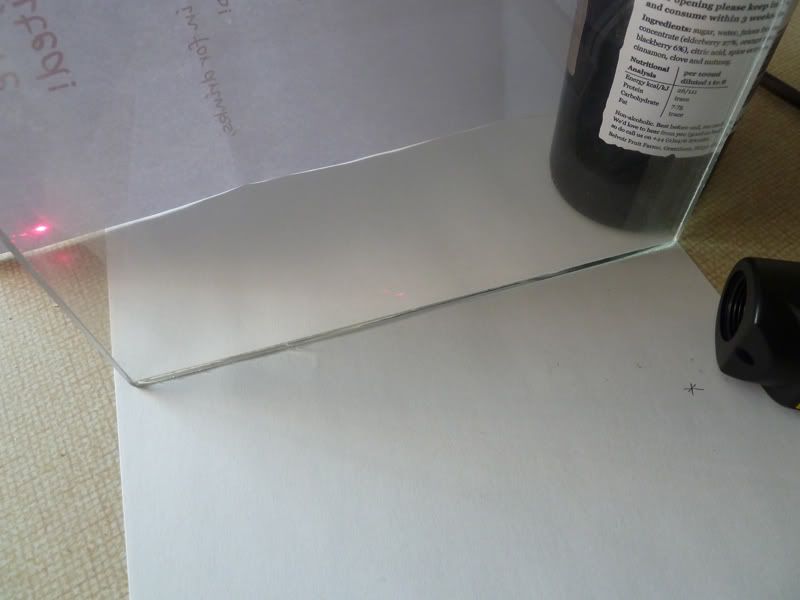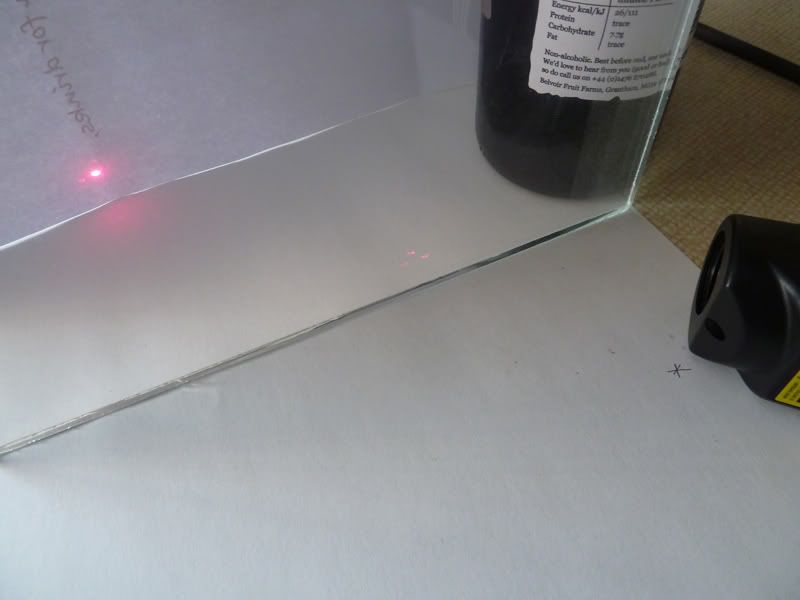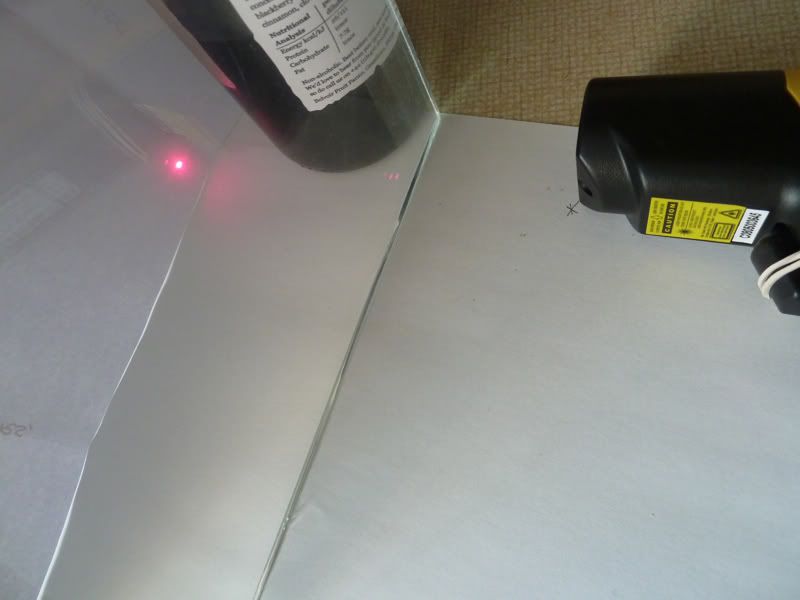(Mods, I know this is way off topic, but I swear the forum members here are the smartest people I know, so please move to the break room if you feel it is too inappropriate)
So I'm building this sight glass that will double as a level sensor and I figure I can use the critical angle of a light source at the water air boundary to prevent light from reaching the photosensor. As you know the critical angle is where the light reflects off of the boundary to internally reflect, thus depriving the sensor of light. So just before I drill the holes for mounting the sensors I'm thinking that I had better check that this works the way its supposed to.
So I set up a laser pointer and a piece of glass with a piece of paper behind it to show the spot which I'm expecting to disappear after the critical angle is exceeded - problem is that it doesn't. I can rotate the glass or change the angle of the pointer and the dot passes through the glass with very little change at all.
Any help much appreciated as I'm way out of my depth here.
Can post pictures if it helps.
Many Thanks
picclock
So I'm building this sight glass that will double as a level sensor and I figure I can use the critical angle of a light source at the water air boundary to prevent light from reaching the photosensor. As you know the critical angle is where the light reflects off of the boundary to internally reflect, thus depriving the sensor of light. So just before I drill the holes for mounting the sensors I'm thinking that I had better check that this works the way its supposed to.
So I set up a laser pointer and a piece of glass with a piece of paper behind it to show the spot which I'm expecting to disappear after the critical angle is exceeded - problem is that it doesn't. I can rotate the glass or change the angle of the pointer and the dot passes through the glass with very little change at all.
Any help much appreciated as I'm way out of my depth here.
Can post pictures if it helps.
Many Thanks
picclock







